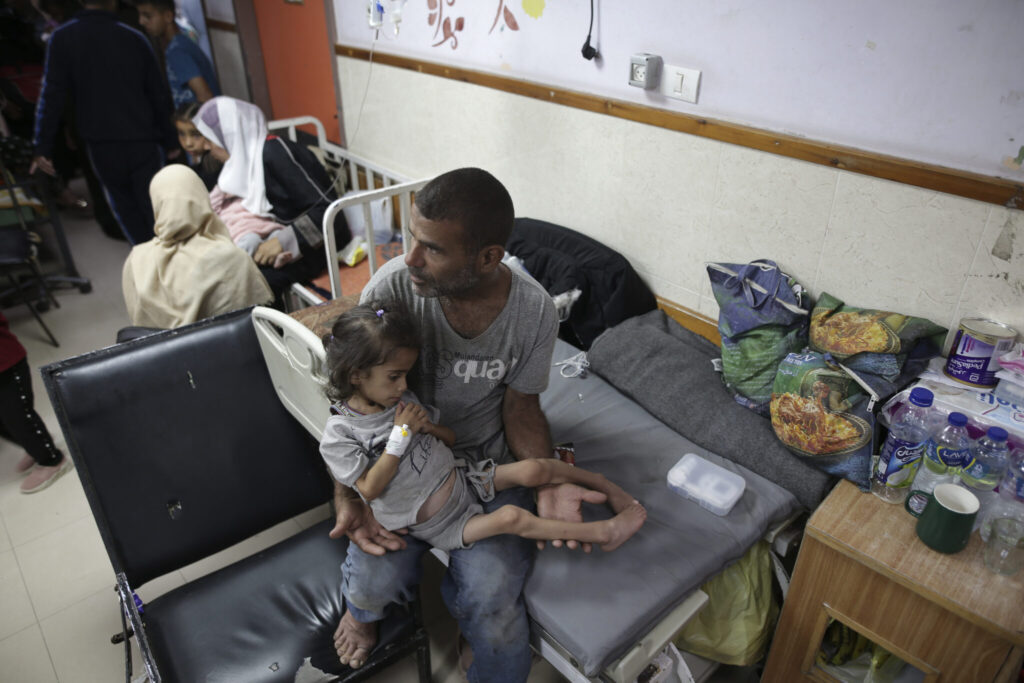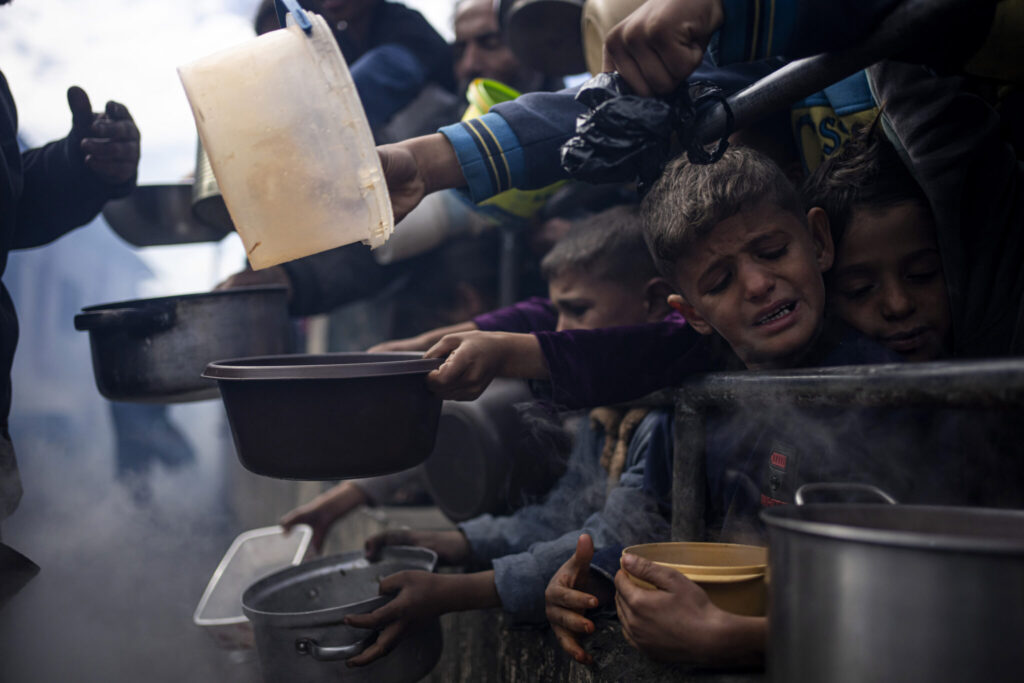Gaza famine/ food crisis/ hunger experts/ humanitarian aid/ Israel-Hamas war/ Gaza famine crisis/ hunger crisis in Gaza/ Gaza food insecurity/ Newslooks/ GAZA/ J. Mansour/ Morning Edition/ The famine risk in Gaza remains high, with 86% of the population facing hunger due to the ongoing Israel-Hamas war. The U.S. has urged Israel to increase humanitarian aid, warning that continued restrictions could affect military assistance. Gaza’s humanitarian crisis is expected to worsen with winter approaching and limited access to food and essentials.

Gaza Famine Risk Heightens Amid Conflict – Quick Looks
- Hunger Crisis Worsening: Famine risk is high in Gaza, with 86% of the population facing severe hunger, according to the Integrated Food Security Phase Classification (IPC).
- Israel’s Restrictions on Aid: For two weeks in October, Israel blocked food supplies to northern Gaza, only resuming limited shipments recently.
- Impact of Military Operations: Displacements and ongoing military strikes have disrupted humanitarian efforts, while Israel has yet to allow residents of evacuated areas to return.
- U.S. Pressure on Israel: U.S. officials have warned Israel that delays in humanitarian aid may impact U.S. military support, urging the country to permit more aid.
- Winter Worsens Situation: With colder months ahead, the risk of hunger and disease is expected to escalate for the displaced population living in crowded shelters.
Gaza Facing Famine Threat as Aid Stalls, Experts Say
Deep Look
A recent report highlights the dire state of hunger in Gaza, where famine risk remains alarmingly high despite a minor reduction in the population facing catastrophic hunger levels. The report by the Integrated Food Security Phase Classification (IPC) indicated that approximately 86% of Gaza’s population, equating to over 1.8 million people, are experiencing severe hunger or worse due to the protracted Israel-Hamas conflict. Among them, about 6%—or 133,000 people—are enduring the highest level of hunger, categorized as catastrophic. Although this figure represents a decrease from earlier stages of the conflict, experts warn that the situation could deteriorate sharply in the coming months as winter approaches and aid flows remain limited.
The report follows a warning issued by the United States to Israel, stressing that continued humanitarian restrictions could affect the U.S. military aid essential to Israel’s ongoing military operations in Gaza and Lebanon. U.S. Secretary of State Antony Blinken and Defense Secretary Lloyd Austin cautioned Israel over the weekend, demanding a significant increase in humanitarian aid allowed into Gaza within a 30-day window. This followed previous diplomatic pressure that resulted in Israel temporarily increasing aid. However, aid levels have since dwindled, falling by over 50% from their peak earlier in the year, according to the U.S. State Department.
86% of Gaza’s population faces crisis-level hunger or worse
Humanitarian officials report that Israel restricted all food shipments to northern Gaza during the first two weeks of October, coinciding with a new offensive in the area. Although the Israeli military recently permitted two shipments to the north—comprising roughly 80 trucks—the current influx remains far below the estimated 350 trucks per day that the U.S. deems necessary to meet Gaza’s humanitarian needs. Since October began, about 430 trucks in total have entered Gaza through the southern Kerem Shalom Crossing, underscoring the gap between international aid needs and actual support on the ground.
Meanwhile, widespread displacement and multiple military operations in Gaza have hampered humanitarian efforts. Many residents of northern Gaza fled following Israeli evacuation orders early in the conflict, and the Israeli government has yet to allow them to return. Today, roughly 400,000 people remain in northern Gaza under harsh conditions, facing a lack of food, clean water, and sanitation. Fearing that Israel may adopt a “surrender-or-starve” policy proposed by some former Israeli generals, Palestinians in the territory remain deeply concerned, with many saying they feel no place in Gaza is truly safe.
Winter’s arrival is expected to amplify the humanitarian crisis, compounding the struggles of those displaced in shelters and camps without adequate protection from the cold. In its report, the IPC emphasized that Gaza’s vulnerable population would struggle to survive the winter without swift international intervention and improved access to essential supplies. The lack of food and medical supplies—coupled with the overcrowded and unsanitary conditions in shelters—is projected to push Gaza’s already critical hunger levels toward catastrophic levels.
Israel cut aid to the north for 2 weeks as it launched another offensive
Israel’s Coordinator of Government Activities in the Territories (COGAT) has asserted that it places no restrictions on humanitarian supplies and has criticized U.N. agencies and other aid organizations for slow distribution. Aid organizations, however, counter that their operations are severely hindered by Israel’s regulations, continued conflict, and disruptions caused by displacement and security risks within Gaza.
The famine risk in Gaza presents a moral and logistical challenge for international actors seeking to mitigate the crisis. The United States, which has contributed nearly $18 billion in military aid to Israel since the onset of the conflict in October 2023, is one of the primary forces advocating for increased aid, a measure deemed essential to prevent further escalation of Gaza’s humanitarian catastrophe.
As hunger experts warn of a likely doubling in catastrophic hunger levels in Gaza over the coming months, the conflict-driven crisis underscores the vulnerability of Gaza’s civilian population amid a yearlong conflict. With tens of thousands displaced and supplies severely limited, Gaza’s people face an uncertain future marked by mounting hardships and the risk of famine.







